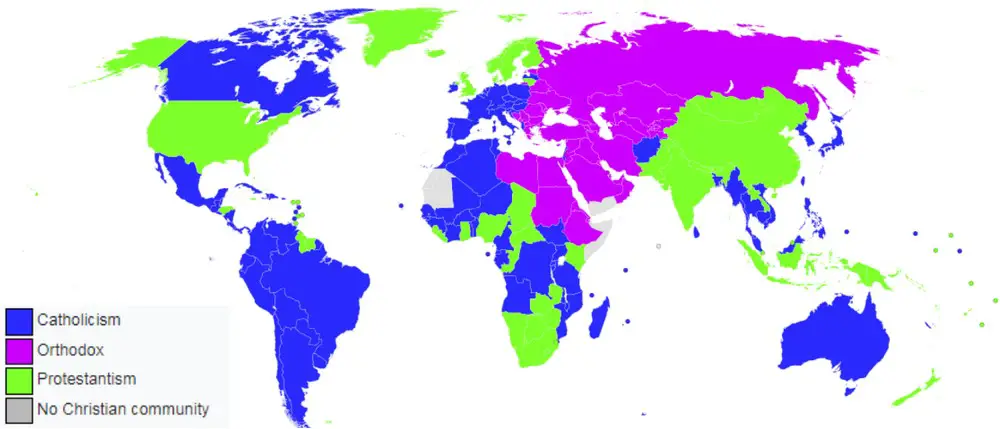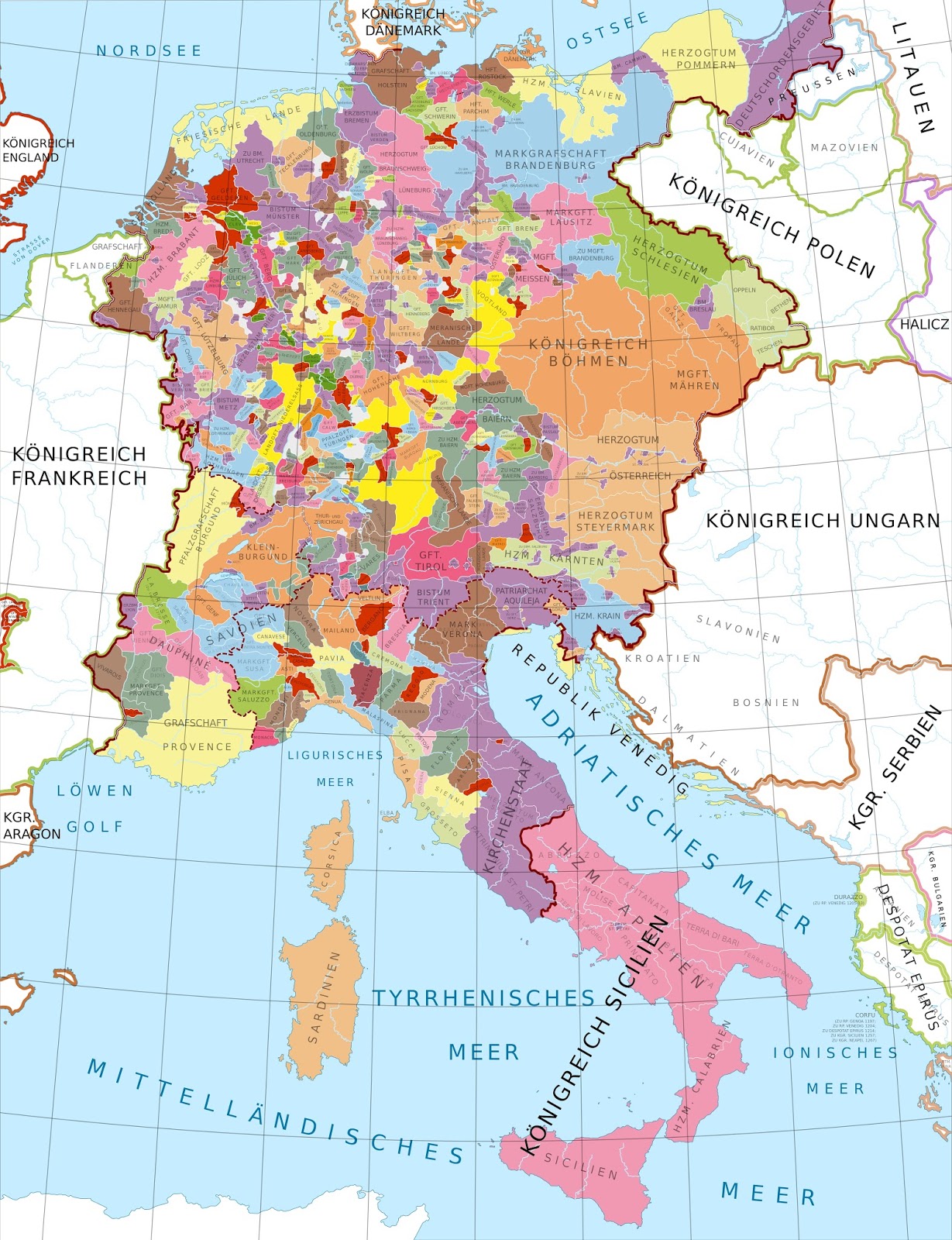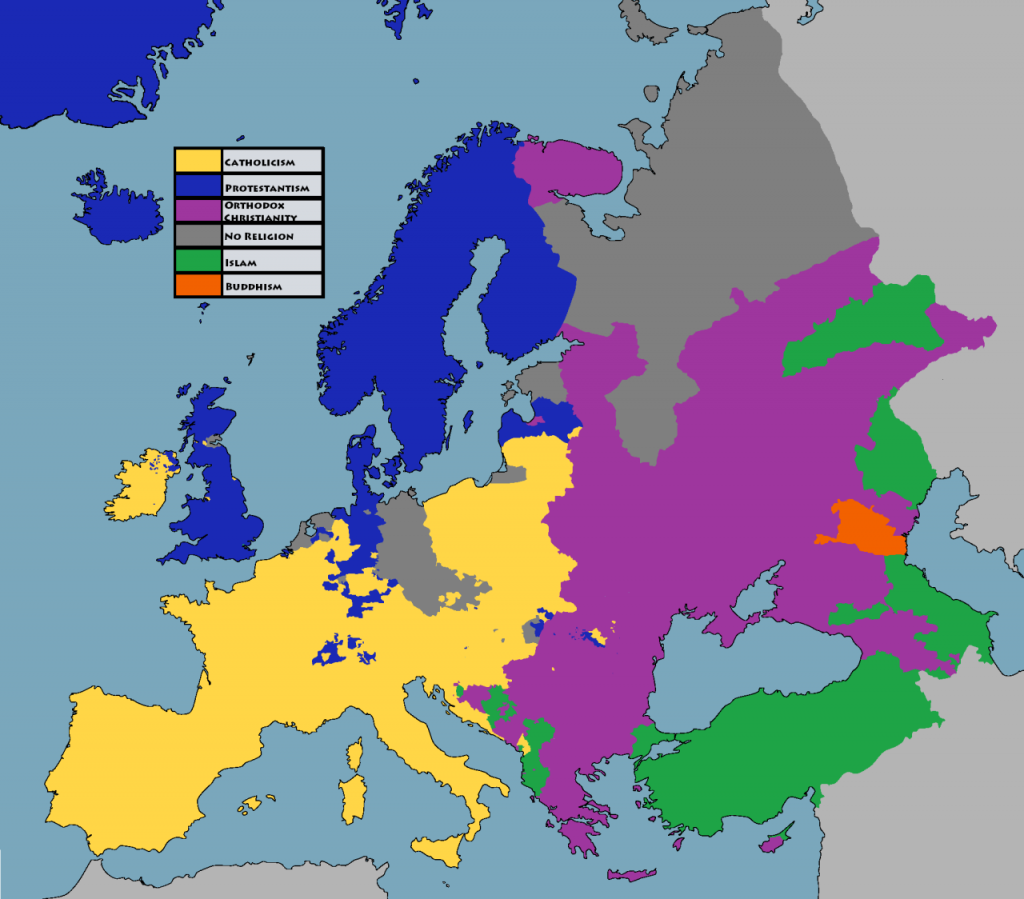Christianity in the US counties
Christianity in the United States is a vibrant and diverse religious landscape. It is the largest religion in the country, with a complex tapestry of denominations, traditions, and practices.
Protestantism is the dominant branch, encompassing a wide range of beliefs and practices, from traditional mainline Protestant denominations like Methodists and Lutherans to more evangelical and charismatic groups. Evangelicalism, with its emphasis on personal faith, conversion experiences, and the authority of the Bible, has a significant presence and has often played a prominent role in American politics and culture.
Roman Catholicism is the second-largest Christian tradition in the United States, with a strong presence in major cities and a rich history of religious education and social services. Eastern Orthodoxy is smaller but has a dedicated community, primarily composed of immigrants and their descendants.
Historically, Black churches have a profound impact on American society, serving as both places of worship and centers of community and activism. The African Methodist Episcopal (AME) Church and the National Baptist Convention, among others, have played pivotal roles in the civil rights movement and continue to be influential.
Th map below shows the percentage of Christians by U.S. county.

Vast swaths of the county are Evangelical Protestants. No-Evangelical protestants live largely in the northern regions of the United States. Catholics encompass most of the big cities, both coasts and along the southern border of the U.S. Mormons live in Utah and neighboring border areas.
Religious and ethnic groups
Religious groups in the United States are often connected with the largest ethnic groups through shared cultural and historical ties.
The majority of European Americans in the United States have historical ties to Christian denominations, often rooted in the religious traditions of their ancestral countries in Europe. For example, German Americans may have Lutheran or Catholic affiliations, while Irish Americans often have Catholic backgrounds.

Roman Catholicism has a significant presence among Hispanic Americans, who have historical ties to countries in Latin America where Catholicism is the dominant religion. Protestant Christianity, including Baptist, Methodist, and Pentecostal traditions, has deep roots in the African American community.
In recent years, there have been shifts in religious affiliation and practice, with some individuals leaving organized religion or identifying as “nones” with no religious affiliation. However, non-denominational and charismatic churches have also seen growth, attracting worshipers with contemporary services and dynamic leadership.
Want to read some more serious books about Christianity in the United States? Then have a look at the following:








I like how all the Mormons can be found in one place
If you want to see another abject failure of Catholic leadership in the US, notice that many of the most “Catholic” areas are also most politically supportive of the pro-abortion, etc., Democrat Party.
IMO religiosity is under-examined as a demographic topic in some ways. EG is a potential factor in “why is the US not like other wealthy countries”.
Very interesting that every majority/plurality Catholic state in the country voted for Hillary in 2016 — and the more Protestant a state is seems to correlate with Trump’s electoral success.